The season where Steven Gerrard had a free role
Steven Gerrard had better seasons than 2003/04, but perhaps none were as fun for the Liverpool skipper.
If you haven’t watched the fantastic half-an-hour long ‘Istanbul Roundtable’ video, which was put out on the club’s YouTube three weeks ago, you should change that. That’s the entire inspiration for today’s deep-dive.
In the strikingly open chat—hosted by Gabby Logan—Rafa Benitez, Steven Gerrard, and Sami Hyypiä pull back the curtain on their own journeys leading up to that fateful night in northwestern Turkey, before basking in the glory of the miracle itself once more, 20 years on.
There’s a rather large elephant in the room and, refreshingly, it’s addressed. In October 2003, the Finnish defender was stripped of the captain’s armband by the late, great Gérard Houllier, to be replaced by the Whiston-born Scouser. Houllier believed, at the time, that the decision would both relieve Hyypiä of some pressure, taking his game to new heights, and see the team thrive under Gerrard’s second-to-none leadership qualities. I think it’s safe to say that he was right.
Their conversation’s a real eye opener. Not least, we are reminded of Sami’s professionalism that enabled him to prolong his Anfield tenure north of a decade, but you realise the sheer extent of stock placed in the young Gerrard from everybody connected to Liverpool in 2003.
“Seeing how he grew as a player and everything, I knew that the captaincy would take him to another level as well. It took him there both as a man and a player.” - SAMI HYYPIA
Gerrard also sheds light on the evolution of his game throughout the years—Stevie’s adamant that Rafa deserves immense credit for driving him to the elite level. Within a year of his appointment, Gerrard finds himself on the Ballon d’or podium alongside Ronaldinho and Frank Lampard.
Simply, there was more of a defined role under Rafa. More advanced. The box-to-box days of Gerrard became a thing of the past once the Spaniard touched down to Merseyside. Benitez remained exceptionally tactical, not that Houllier wasn’t, and hands-on with every single little detail regarding a player’s positioning.
Like the sub-title suggests, Houllier’s final bow didn’t resemble Gerrard’s best campaign. Nor his second, nor his third. For me, top spot’s a flip of a coin between 05/06 and 08/09; in the former Gerrard’s remarkably consistent as the ‘main man’ while he enjoys his best campaign from a number’s perspective in the latter, aided by the brilliance of Fernando Torres. Stevie’s world class in 07/08, I’ve previously written about Fernando’s excellence that year, and his first season under Rafa (04/05) is remembered more favourably, than this one, for the obvious Champions League heroics.
What he is, in 2003/04, is exceptionally fun. Somebody’s got to step up and put the cape on in a flattering-to-deceive side, especially in the engine room. The 23-year-old was ready to carry the mantle one final time before Houllier walked off into the sunset.
It’s not a campaign (from the club’s perspective) to tell your grandchildren about, that’s for sure. Liverpool finish 4th and fail to win a trophy for the first season since before the millennium. Entertaining at least? Not particularly. Just 55 league goals—LFC’s third-lowest tally in the Premier League era. Outside of Michael Owen’s 16 league goals, a figure which would’ve undoubtedly exceeded 20 had he not missed two months of the campaign, Liverpool’s next highest source of goals, in the Premier League, was tied between Emile Heskey and Harry Kewell with just seven each. For reference, Darwin Nunez netted nine times (PL) in 24/25.
It’s important to note, contextually, that Houllier was on thin ice heading into the beginning of this season after the Reds finished 5th the season prior. Criticism was rife given the consistent failings of his signings towards the end of his tenure; El Hadj-Diouf was signed ahead of Nicolas Anelka, Bruno Cheyrou was hailed as the ‘new Zidane’ instead of chasing a deal for Damien Duff. And then there’s Salif Diao. Yeah.
There wasn’t any real animosity towards the French manager, though. Besides, spirits were hugely lifted heading into the season with the blockbuster transfer of Harry Kewell for just £4.5m—he’d already been lighting up the Premier League since 1997, at that point, for Leeds. Steve Finnan wasn’t a flashy acquisition, from Fulham for £3.5m, but was perceived as a hugely reliable right back. We’d been forced to wait two long years for the arrivals of teenage ‘stars’ Florent Sinama Pongolle and Anthony Le Tallec before the pair finally rocked up that summer. It didn’t take long for many fans to hope that Le Havre operated with a refund policy.
And it didn’t take long for the high hopes and expectations of the new forwards to dampen. Liverpool couldn’t hit a barn door. A title challenge? Pftt. They were drawing against sides from Slovenia and Romania in the UEFA Cup.
Owen was still Owen but his injuries were still his injuries. As the season progressed, it became an inevitability that he was Madrid bound by the summer. Consequently, the eyes were on Gerrard.
So, how was Gerrard platformed to perform tricks like this on a weekly basis?
Certainly a 23-year-old enjoying his football…
Like I’ve already mentioned, he was essentially a free spirit. Box to box. Everywhere. That’s the short answer. Rafa wasn’t a fan of the ‘free reigns’ approach, starting from the season after, and restricted that somewhat.
Sometimes Gerrard’s industry and grit worked against him, particularly in the discourse surrounding him. He was aggressive, tenacious, all-action and, frankly, British. I generally despise the “if he was Brazilian with ‘inho’ at the end of his name” cliche, though I honestly think it’s applicable with Gerrard. Nothing he couldn’t do with the ball at his feet. Samba flair in a Knowsley boy’s boots.
There was nothing complex or fancy about Houllier’s system. He liked a 4-4-2 with one sitting, defensive-minded midfielder and another box-to-box who could do everything. Gerrard was elite at both roles — he played a fair few times in the holding role when Danny Murphy/Vladimir Smicer started as the more advanced midfielder — but enjoyed his greatest success, under Houllier, in the ‘free’ B2B role.
It wasn’t just for Liverpool where Stevie was deployed as both a sitting midfielder and the freer roaming CM. See this great GIF from Euro 2004, in a match against Switzerland, where England’s no.4 sits at the base of the midfield.
‘Captain Fantastic’ ends the season with fantastic output. Genuinely great numbers from midfield. What he does that season transcends mere statistics though; Gerrard honestly carries the Reds on his back at times, doing multiple roles at once. Via Transfermarkt: 4 goals and 9 assists in the league, an impressive 2 goals and 7 assists in the UEFA Cup despite a fairly early exit to Marseille, and three total assists across the FA and Carling Cup ‘runs’—means he ended 2003/04 with six goals and nineteen assists.
I’ll give each and every side of his game, that season, its deserving flowers. But first, that figure of 19 assists should not serve as a surprise in the slightest. Houllier gave him license to spray these about every week—he’d have been the biggest fool in the North West if he hadn’t. A complete and utter cheat code.
Whether it was a cross-field diagonal to a winger, a defence-splitting ball to a striker, or a perfectly weighted pass from deep, Gerrard’s range of pass was otherworldly.
Jamie Carragher: "He was the best long passer I've ever played with. He could land the ball on a sixpence from 40 yards."
Xabi Alonso: "His passing range was unbelievable. He could switch the play or pick out a forward-runner from deep with absolute precision."
Michael Owen truly couldn’t have dreamt of a more perfect midfielder to be supplying him that season. There’s a reason why Michael’s since went on record to rank Gerrard as second to only Zinedine Zidane in his list of greatest teammates. That’s quite the compliment given the riches of talent the Ballon d’or winner shared a dressing room with. It’s just a shame that the wide men and supporting cast, up top, were generally sub-par.
Football isn’t a complicated game. Mix Gerrard’s vision and long passing ability with Owen’s blistering pace and Heskey’s threat in the air, and you’re looking good.
I mean is it really any wonder why Owen adored gracing the pitch with him? This was a sensational individual performance, from the captain, away at the Invincible Champions. There’s a great YouTube compilation of it here.
That diagonal out left to Kewell was a staple of our play.
Stevie wasn’t a consistent source of goals at that stage of his career; he managed just one campaign of double-figure goals under Houllier, in the ‘treble’ winning season in 2001, before Benitez made that feat a regular occurrence. What he was, though, was a threat and a presence in the box. He had those instincts, from a young age, to come alive and ‘crash’ into the box.
“Steven has all the attributes to be a complete midfielder—he can tackle, pass, and score goals,” said Houllier. “I want him to be more prolific because he has the ability to do so,” he added. Gérard correctly profiled him as an all-action midfield powerhouse but, as I pointed out, the repeated clamour (in the media) for Stevie to bag more goals never really led to his wish being granted. Benitez would find the formula to retain Gerrard’s invaluable general assets whilst still improving his goalscoring numbers.
Look at the speed and willingness to get into that box. He’s not even on the edge when Murphy initially picks up the ball.
Before set piece tactics became cool! Where’s Nicolas Jover? Gerrard was a reasonably strong threat in the air at both uncontested headers and contested duels with that 6′ 1″ frame of his. He developed quite the knack for assisting Sami Hyypia this season, by the way. Four in the Premier League alone. And, as you can see, they didn’t all involve firing it at the Fin’s big ol' head.
One *hell* of a delivery to set up Hyypia’s dramatic late winner against Wolverhampton Wanderers.
Gerrard was one powerful runner. That’s quite the understatement. He won you a *lot* of fouls, dragged you 20 yards up the pitch with ease, initiated attack after attack both in transition and in ‘settled’ play, but most importantly possessed the nous to link up and combine with the front men in those surges.
It was actually 2004 when Sir Alex Ferguson sang his praises about our skipper’s engine, very loudly: “he has become the most influential player in England, bar none -he’s got that unbelievable engine, desire, determination." The legendary Thierry Henry also echoed that sentiment: “He could grab a game by the scruff of the neck and single-handedly drag his team forward."
Apologies for the shoddy quality, it’s over 20 years old forgive me, but you get the gist. Liverpool were ultimately chucked out of Europe by Marseille but it certainly wasn’t for the want of trying by the skipper. This was the start of his evolution—placing all of the responsibility onto his shoulders on a big European night.
His acceleration and explosive bursts of speed were, simply, freakish. When Gerrard was in full throttle like that, it was curtains for opposing midfielders.
I’ll always remember a fantastic line from Carragher where he talks about his pace and power being overlooked: “He can go past players like a winger.”
John Arne Riise: Stevie was so fast and strong. When he ran with the ball, you couldn’t stop him.”
Steven Gerrard was a force on both sides of the ball. Even before his prime. Even as a teenager. You don’t need me to tell you that.
Granted, the defensive off-ball side of his game was a lot more critical when he was the ‘sitter’ of the two midfielders, which he regularly was for England around this time period but only for about 20% of this season for his club, however he still performed a lot of the admirable but unfashionable dog work in the box-to-box role.
Stevie was by no means a specialist defensive midfielder—he could win the ball back just as well as your ‘destroyers’, though.
Early years Steven Gerrard to an absolute tee, this is. Relentless presser. Infectious. Gets the crowd and players singing from the same hymn sheet.
Got to be quicker there, Saha! There’s a train coming.
Gerrard’s upper body strength was pretty phenomenal. He was always extremely clever with the timing and anticipation of these challenges. That aforementioned explosive acceleration played a role too; Gerrard could close down space quickly, making it difficult for opponents to shield the ball.
If you enjoy my work, please consider a paid subscription to receive a whole host more analytical and in-depth articles including detailed player profiles/deep dives at both first team and academy level. Alternatively, you could buy me a coffee. Thanks for reading.




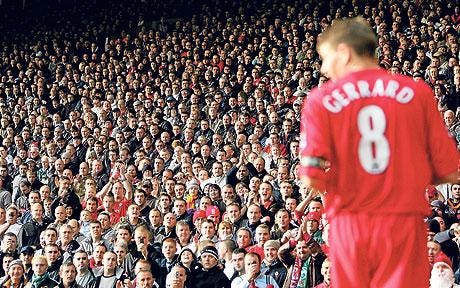
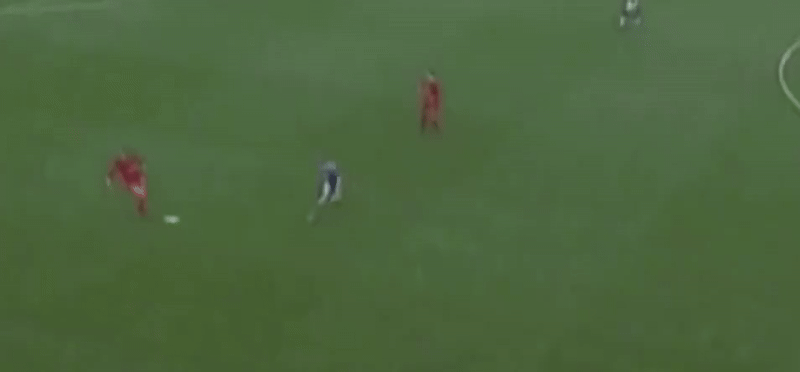
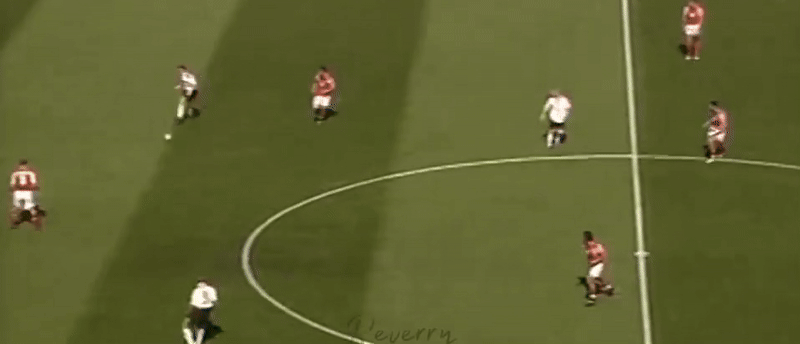
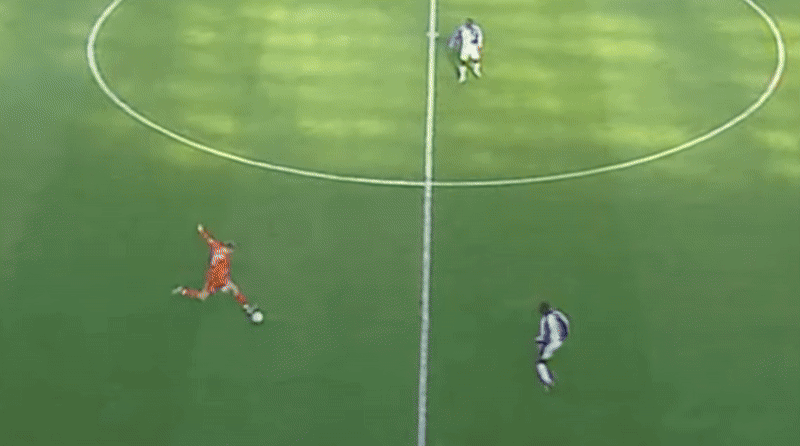
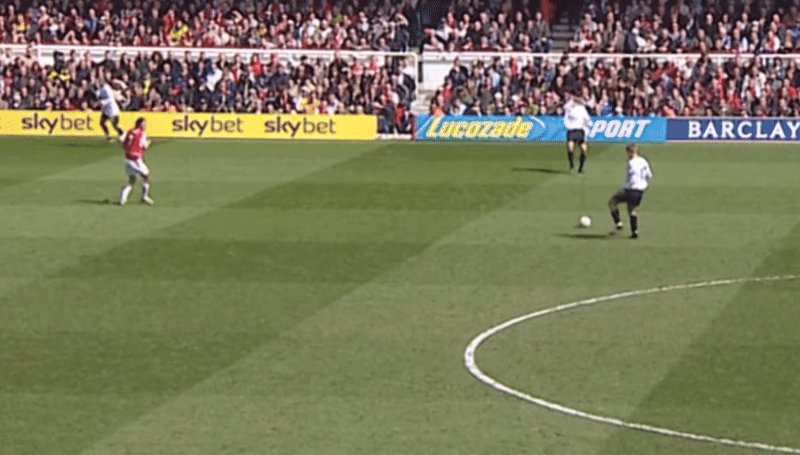
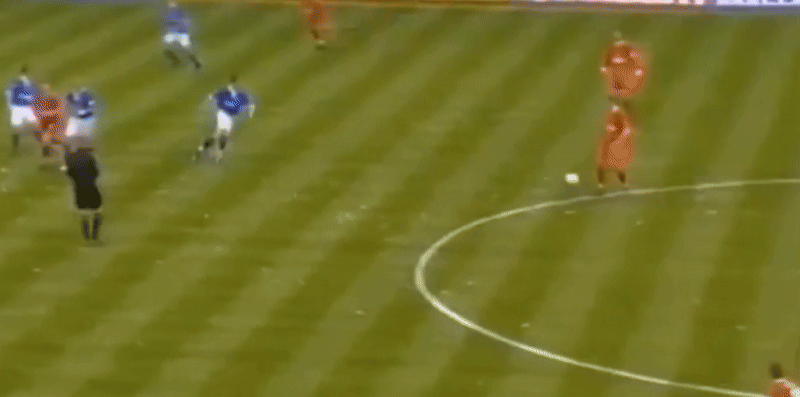
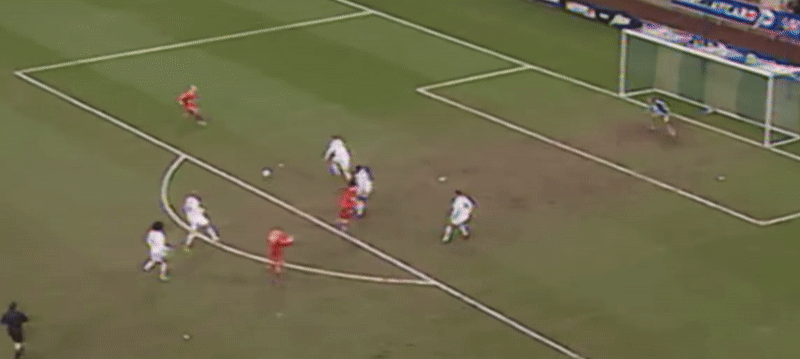
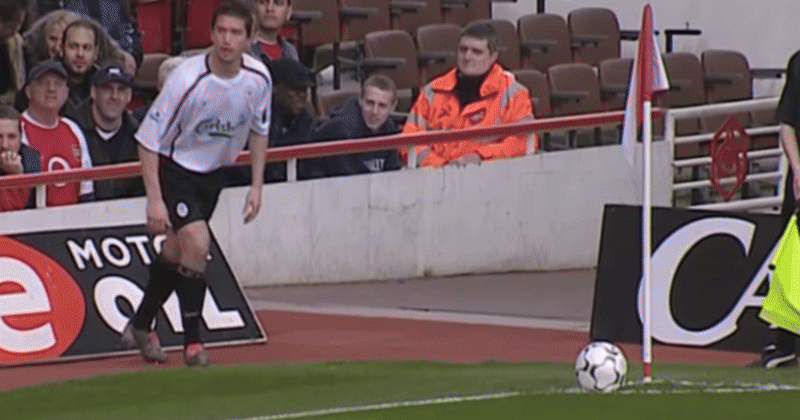

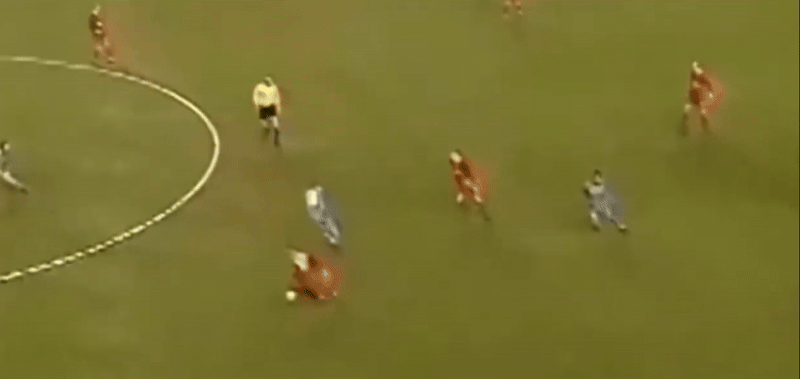
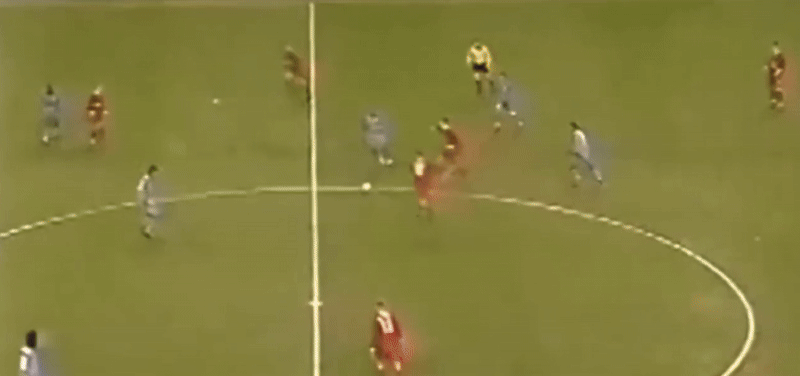

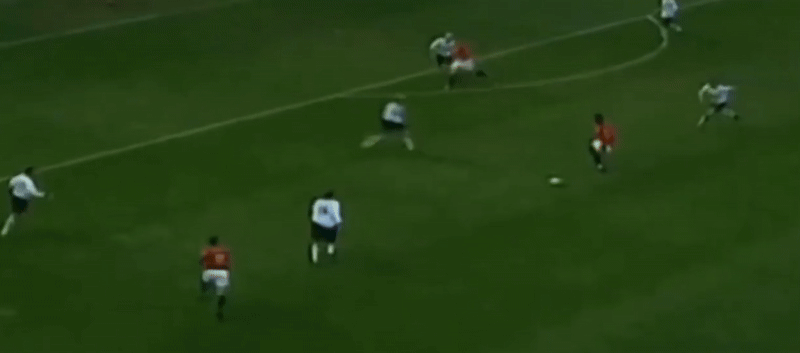
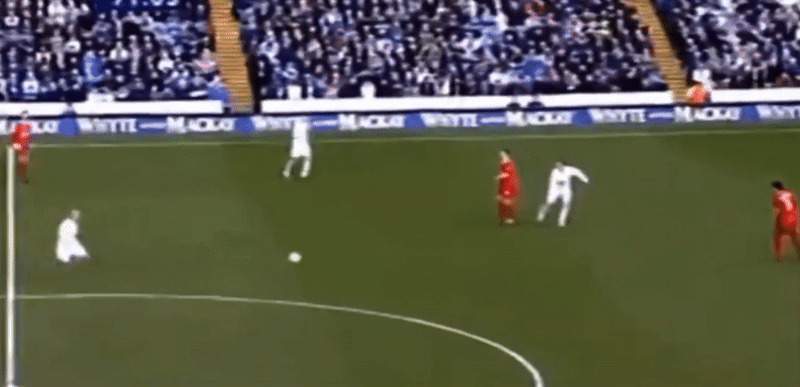
Lovely article, thanks!
Controversial opinion… but despite being my favorite ever player.. one of the reasons I think Gerrard was better as a 10 under Rafa was it stopped him making those beautiful diagonals..
It’s easier to explain if you watch rugby.. but when a team has a 3 on 2 overlap, the player with the ball can be tempted to make a long miss-one pass to the free winger.. but it’s almost always the wrong action because unless it’s perfectly flat, fast etc it just allows the defence to shift across and kills the overlap…
The simple passes, draw the defender and pass, twice, puts the winger away to score uncontested..
Gerrard did that too often.. the passes looked amazing but too often allowed defence to shift across when a simpler pass was on.
Incidentally, that’s the difference with Trent.. his long passes just have that extra swerve and pace and spin that they put the man away without giving the defence the time to drift accross